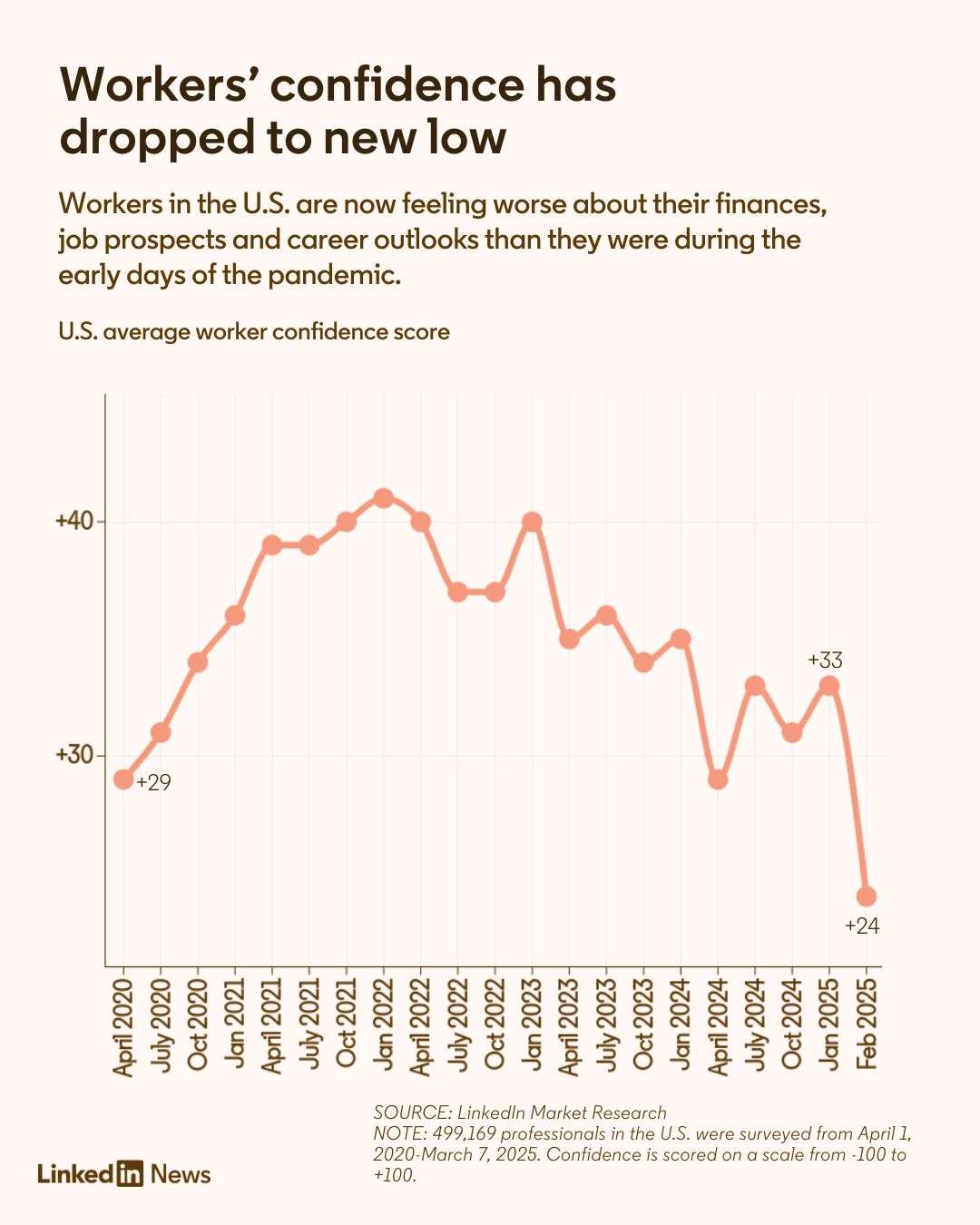Workforce Confidence Index → United States
U.S. Workforce Confidence Index (WCI)
The LinkedIn Market Research team surveys its members daily to understand how they’re feeling about their careers, current company, and more. Every two weeks the team aggregates the survey data to analyze the latest in Workforce Confidence trends.
In the WCI survey, LinkedIn market researchers ask LinkedIn members about their confidence to get/hold a job, improve their financial situation and progress in their career. That is used to calculate an index score from their opinions by assigning each respondent a score (-100, -50, 0, +50, +100), based on how much they agree or disagree with the three statements, and then create the composite average score across all statements.

Methodology
LinkedIn’s Workforce Confidence Index is based on a quantitative online survey from LinkedIn’s market research team that is distributed to members via email every day and aggregated every two weeks. Between 2,000 to 3,000 U.S.-based members respond to each two-week wave of the survey. Members are randomly sampled and must be opted-in to research to participate. Students, stay-at-home partners, and retirees are excluded from analysis so that we’re able to get an accurate representation of those currently active in the workforce. We analyze data in aggregate and will always respect member privacy.
Data is weighted by engagement level to ensure fair representation of various activity levels on the platform. The results represent the world as seen through the lens of LinkedIn’s membership; variances between LinkedIn’s membership and the overall market population are not accounted for.

Follow the Economic Graph team on LinkedIn
Discover our latest content and never miss a report.
Follow the Economic Graph team on LinkedIn
Discover our latest content and never miss a report.